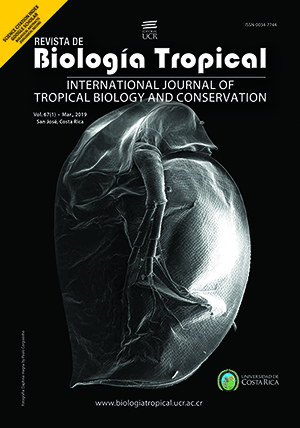Abstract
General changes in land use have established patterns of modification of native vegetation into agricultural and grazing land. These production systems, as well as social and economic influences, have created diverse landscapes - mosaics composed of varied elements of vegetation cover (forests, crops, pastures, barren fields) that are distributed across spaces in different ways. In this investigation, we determine the distribution patterns of the richness, abundance and diversity of the bird community within the configuration and composition of agroforestry and silvopastoral landscapes. We observed 262 bird species, 6 720 individuals, 23 orders and 54 families within 39 production system mosaics. None of the species accumulation curves in the production systems reached their asymptote, and the calculated estimators predicted a greater number of species than those observed during the survey. In general terms, richness, diversity and equitability indices were highest in the mosaics of agroforestry systems, while abundance and dominance indices were highest in the mosaics associated with silvopastoral and traditional livestock systems. Variables that describe vegetation cover in mosaics have different and independent effects on the diversity of bird assemblages and on the association of land use groups within the mosaics. The positive extreme of the first component contributes to the variance in the model of richness and diversity indices - both the structural components of landscapes and biological components of the assemblages. The area and disposition of different types of elements in the mosaics of the production system landscapes reflect the systematic management of covers, which affects the implications of landscape conservation and restoration practices. Different landscape elements serve as points of contact in the dispersion and distribution of species within these landscapes. The priority of conservation efforts and the first step for the restoration and connectivity of landscapes in the Andean Amazon of Colombia should be the management and protection of covers like old stubble or BFG and BRP. Another approach is the design of landscapes for entire communities of species with respect to certain quantities of habitats in the landscape and the isolation of patches.
Comments

This work is licensed under a Creative Commons Attribution 4.0 International License.
Copyright (c) 2019 Alexander Velásquez Valencia, Maria Argenis Bonilla Gómez







